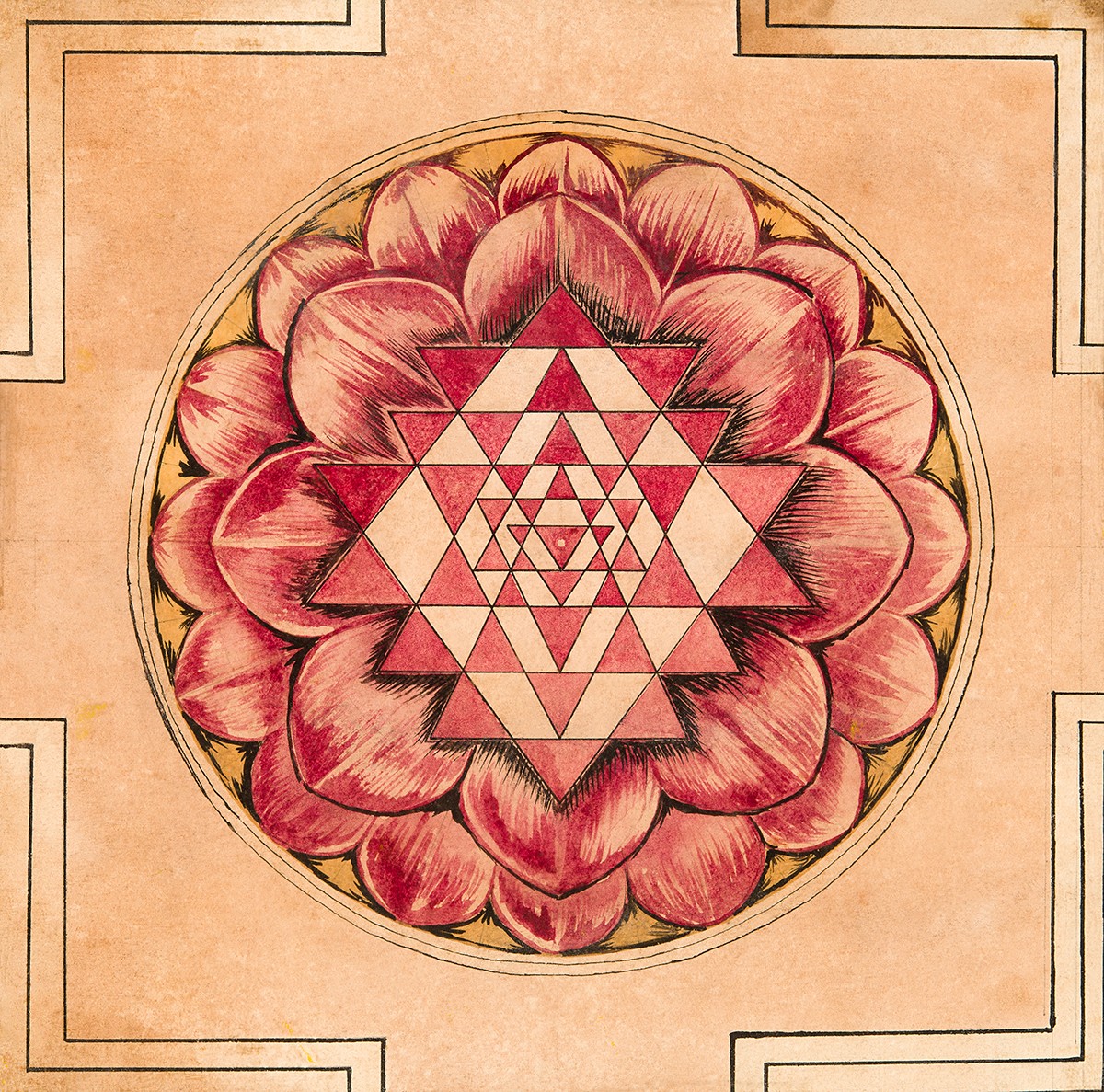- Edited

Ramana Maharshi was very close to a number of Śrīvidyā upāsakas in his life including the great Seshadri Swamigal and a number of advanced householder upāsakas, one of which he even personally colored and decorated a śrī yantra (shown above) for as a gift some years before the Amman temple was constructed in the aśrama. The actual cakra was drawn by a sthapathi, but Ramana did draw the trivṛtta (three circles) freehand and proceeded to color and shade the yantra with colored pencils.
Although not his public focus, Ramana often spoke of, and commented upon, Śrīvidya upāsana and śāstras in both 'lowkey' as well overt ways. During the construction of the Amman temple, Ramana took meticulous interest in the construction of the granite meru, personally inscribed bījākṣara mantras (for Murugan) on the gold bhūprasthāra yantra which sits under the meru, and performed many other fascinating līlās which are recorded as anecdotes by close devotees. Such stories solidify his connection to Śrīvidyā.
Sometime after the kumbhābhiṣekam (consecration ceremony) of the temple, a Śrīcakra pūjā was performed. Ramana took such great interest in the pūjā that he refused his dinner until the entire ritual was concluded. Someone remarked to him how magnificent it had been and how wonderful it would be to continue the worship. He replied, "yes, but who will see to this?" It turns out, Alan Chadwick, who had been standing next to Ramana during the consecration ceremony of the meru was the one to convince the aśrama authorities that the pūjā must be done six times a month and if I'm not mistaken, he funded it as well.
Sharing one of the more salient comments from Ramana on the Śrīcakra...
April 19th, 1937, Talk 405
A respectable and orthodox gentleman asked about Sri Cakra...
Ramana Maharshi: It has a deep significance. There are 43 corners with sacred syllables in them. Its worship is a method for concentration of mind. The mind is wont to move externally. It must be checked and turned within. Its habit is to dwell on names and forms, for all external objects possess names and forms. Such names and forms are made symbolic mental conceptions in order to divert the mind from external objects and make it dwell within itself. The idols, mantras, yantras, are all meant to give food to the mind in its introvert state, so that It may later become capable of being concentrated, after which the superb state is reached automatically.

